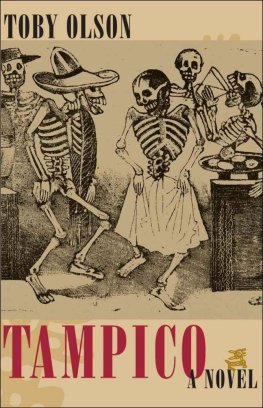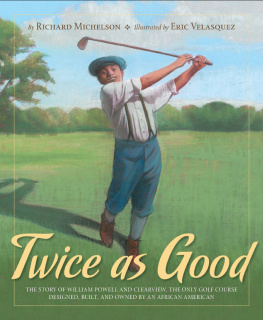For
Morris and Smitty,
Dennis and Rich,
Julian and Ollie
The search for lost things is hindered by routine habits and that is why it is so difficult to find them.
Gabriel Garcia Marquez
I am determined not to live until I have no country!
King Philip (Wampanoag Sachem), 1675
The author wishes to thank Temple University, for its aid and support, and Lou Thibeault, PGA professional, for his golf tips.
Portions of this book first appeared in somewhat different form in Sun and Moon.
Epigraph quotation by Gabriel Garcia Marquez, from One Hundred Years of Solitude, translated by Gregory Rabassa (Translation 1970 by Harper & Row, Publishers, Inc.), is reprinted by permission of Harper & Row.
The extract quotation from Cape Cod: Its People and Their History, by Henry C. Kittredge, 2nd edition, Houghton Mifflin Company, 1968 (Copyright 1930 by Henry C. Kittredge; Copyright renewed, 1958), is reprinted by permission of Houghton Mifflin.
TO ENTER A TOBY OLSON FICTION IS TO ENTER AN UN guarded borderland. Sometimes one finds oneself at an actual border the Mexican-American one, for example, in such books as The Woman Who Escaped from Shame or The Blond Boxbut even there, the encounter is felt to be emblematic of stranger, more enigmatic borders: that between the natural and the uncanny, for example, between notions of gender and between cultures, between the real and the surreal or the real and our perception of the real, between the mundane and the extraordinary, the probable and the improbable, between dreams and the waking life. In the opening Tea Dream chapter of Seaview, the golfer Allen, dreaming of a great white horse on a golf course galloping down at him from green to tee, is awakened by his mortally ill wife, Melinda, blowing the steam off a cup of jasmine tea in his face, so gently bringing him to consciousness that the border between dream and waking life is dissolved: And the dream and what he might have chosen to call reality had come together like a kind of smoke net to lift him up. Allen later uses this border-less emergence from sleep to try to describe, while meditating upon Melindas looming death (which seems almost beyond the real, yet utterly of it), another kind of awakening, this time from everyday practical thought into an augmented clarity that rendered most of the rest dreamlike. Something like an epiphany.
This rise to clarity, with its flavor of the dream transition, he decides, had to do with immediacy. Except occasionally, when addressing a golf ball or surrendering to sex (of which, herein, some deliciously original passages), Allen rarely privileged to experience this immediacy, this uncomplicated immersion in the here and now. Even Allens reflection on his Tea Dream opposes the immediacy he is trying to capture and define. Like the author, Allen is engaged with practical matters, organizing the journey that will take them from Tucson to Melindas childhood home on Cape Cod and the climaxes to their stories, to their lives that await them there. This is a creative task, but one that requires planning and reflection, the use of memory and judgment, and as much rethinking as thinking. If he were living purely in the here and now, they would probably never reach the Cape, and the author would never finish his tale.
This is the fate of most writers, the finding of words (and then the revising of words) always following upon that which they seek to describe, its original immediacy long lost, and it helps account for the writerly fascination with those enigmatic creatures who do live wholly in what Olson sometimes calls the luminous presentand who could therefore, of course, never write about it, nor would wish to. These almost magical beings can only be watched and listened to as they pass through the present, insouciantly yet often wisely, as vivid and as inscrutable as nature itself. Here, that role belongs to the compellingly appealing Bob White, a member of the Indian tribe known on the Cape, somewhat jocularly, as the Quahog People, who travels east with Allen and Melinda, sharing car and even bed with them, yet seeming somehow to exist on another plane. Not that writers dont have their own epiphanic moments of course, happening most often when, as though from nowhere, the precisely right phrase arrives with all the power of a revelation, a phrase that, for all the authors skillful preparations (Olson speaks of the struggle to position a self in life and in writing, not a struggle creatures living wholly in the here and now are even likely to understand: the self? cest moi), is often remarkably simple as when Bob White answers Melindas question about the bird they have rescued from the snakes jaw on a very peculiar miniature golf course the night before. One merely sighs and says, oh yes, and wishes all ones writing were like that.
This feeling of immediacy, or the illusion of it, is often achieved in Olsons writing by the depiction of a character engaged to the exclusion of all else with a particular and often original skill the giving of massages, lets say, or the building and inaugurating of an outhouse, the art of the prostitute, or Jesus careful washing of the disciples feet in Jesus/Olsons earthy yet fanciful autobiography. People, as Olson has said in praise (of golfers, in this case), enthusiastically attentive to mastery. Here, in Seaview, we have suchlike as Allens amazing golf strokes (his skill, once he has made his mystical connection, not only allows him to place his shots with uncanny accuracy and use his golf bag as an arsenal but also to read the minds of others, predict their behaviors, and influence them; otherwise hes just an ordinary sort of fellow, give or take a crime or two); Bob Whites memorable snake hunting; Chips loving care of a golf green; or the curmudgeonly Chairs ritualized act of donning his golf togs which include a pair of white golf pants with sailing boats, whales, and dolphins printed or embroidered on them all meticulously examined, reminding one of another of Olsons writing characteristics: the surreal multilayered examination of an image in which something as simple as, say, a tattoo or a shirt logo can become as complex as a wall-sized epic painting, scale being another strange Olson borderland, easily transgressed. (Wait til you see what happens when duffer Eddie Costa starts poking around in his golf bag.)
These momentary captures of immediacy when time almost seems to stand still are sometimes referred to by Olson as interludes, as they are in life itself, or in music. If borderlands are by their nature somewhat amorphous and unmappable, structure can be imposed upon them by other means, and Olsons means are often musical. There are these interludes and set pieces: solo riffs, like those of Chip or Bob White or Melindas Integrity Sphere story; staged duets; harsh dissonances contrasted with sweet old-fashioned melodies, as in the astonishingly gratifying Mood Music chapter; recurrent motifs like emblematic drone tones; and a climactic, intricately orchestrated big-band finale.
Music draws ones attention writerly, readerly to surface, to sensual beauty. I know of no other writer who so unabashedly loves the world as, right on its amazing surface, it sensuously is and yet with such a mischievous sense of humor toys so freely with it. Seaviews Melinda, who as a child went to sea with her Portuguese fisherman father and grew up to be a painter and also, for a time, a successful writer, is seen in her flowering to exhibit the joining of tenderness, sensitivity, and strength with intelligence and skill, which describes as well as anything this masterful book and its tender, sensitive, and powerful author.








